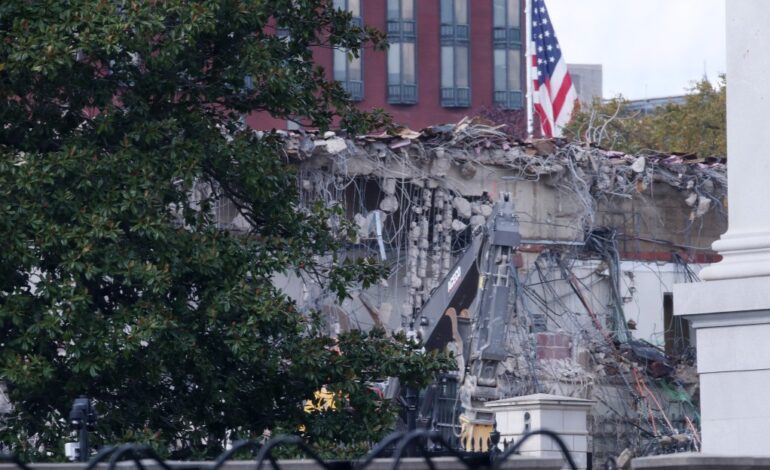Trump Demolishes East Wing of White House, Urgent Controversy Grows

UPDATE: The East Wing of the White House is being demolished as of October 22, 2025, with work crews actively dismantling the structure. This urgent development comes as President Donald Trump pushes forward with plans for a privately funded ballroom, raising significant concerns about the lack of oversight and public input.
Trump announced the controversial project earlier this summer, claiming the new ballroom “won’t interfere with the current building. It’ll be near it, but not touching it.” However, as the East Wing faces complete destruction this weekend, questions arise about the legality and appropriateness of this demolition without any formal review or approval process.
Authorities report that at least two key commissions typically involved in White House modifications have not reviewed or approved the plans for the East Wing’s demolition. This glaring oversight has sparked outrage, as the East Wing represents a vital piece of American history that is now being erased without public discourse or legislative input.
Why does this matter? The destruction of the East Wing is not just a physical alteration to the White House but a symbol of Trump’s sweeping changes to national governance. Critics argue that such actions reflect an alarming trend in the administration’s approach—one that prioritizes personal projects over historical preservation and democratic processes.
The East Wing is newer than much of the White House complex but has served as an essential part of the nation’s presidential history. Trump’s previous alterations, including the controversial paving of the historic Rose Garden, have already drawn significant criticism; however, the demolition of the East Wing marks the most extensive and permanent change to the property.
As this situation unfolds, the implications extend beyond the East Wing. The dismantling of this iconic structure parallels other significant actions taken by the Trump administration, such as the evisceration of the U.S. Agency for International Development and substantial cuts to scientific agencies like the Centers for Disease Control and Prevention.
What’s next? As the East Wing faces imminent destruction, observers are left wondering how this move will resonate with the public and lawmakers alike. Will there be any legal recourse to halt the demolition? And what will be the lasting impact on future governance and preservation efforts?
This urgent situation continues to develop, and its ramifications may be felt long after the East Wing is gone. As the nation watches, the conversation around historical preservation and executive power intensifies, prompting citizens to voice their concerns and demand accountability.
Stay tuned for more updates on this developing story.






